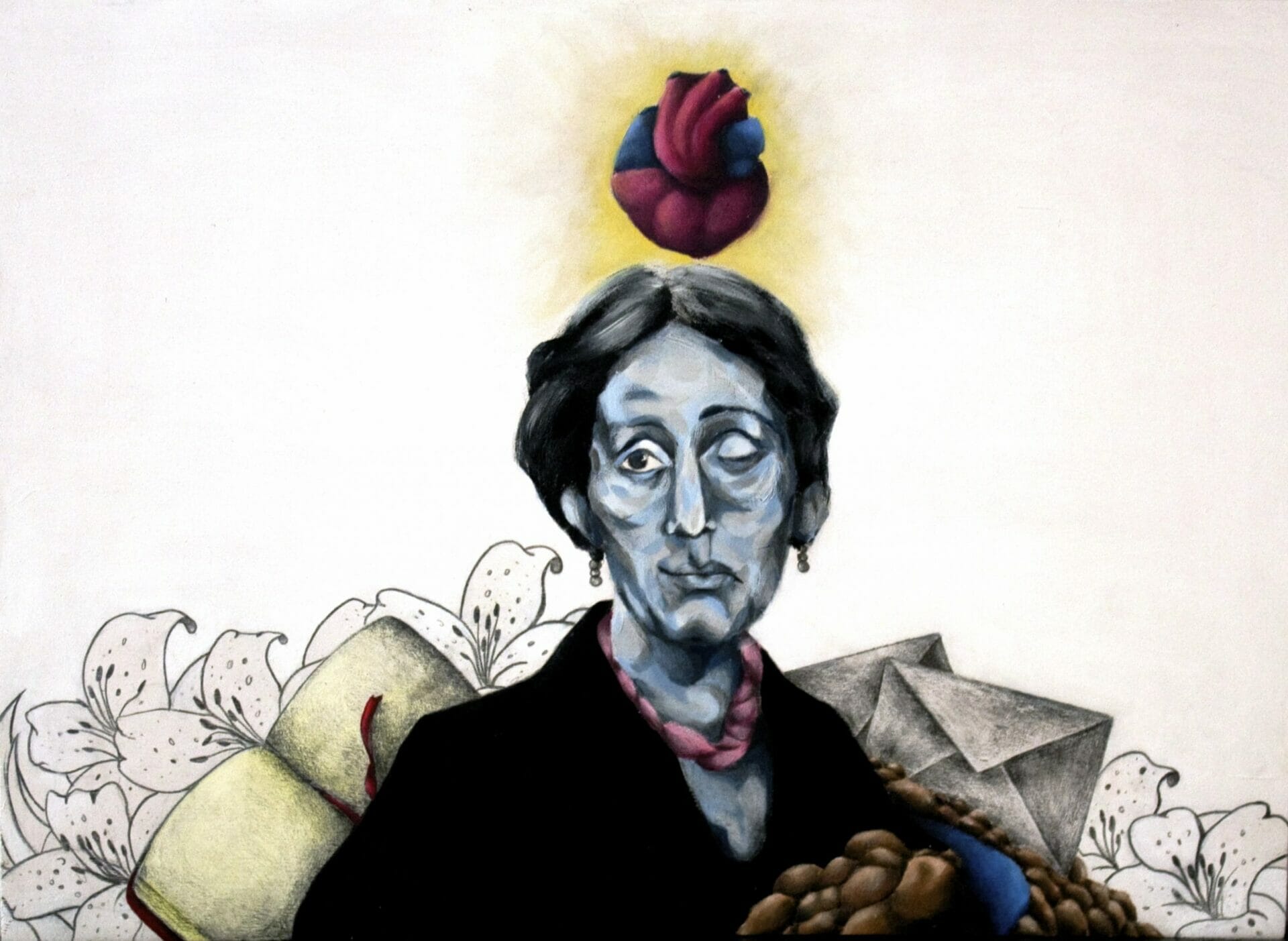
Zeno's Conscience | The XX century man
Author
Year
Format
In 1919, at the age of 58, after twenty-five years of absence from literature and exactly four months after the arrival of Italian troops in Trieste during the First World War, Italo Svevo started writing Zeno’s Conscience. He wrote it on his typewriter between sleepless nights and endless cigarette butts. The book was released in 1923, precisely 100 years ago.
Svevo stopped writing because of the failure of his first novels Una vita (1882) and Senilità (1898). The last one referred by himself a “filth” which remained on his stomach. However, Zeno’s Conscience was quite successful in Italy and France thanks to his friend James Joyce who promoted it.
The “inward turn” of the modern novel
Despite this, in the early twentieth century, Zeno’s Conscience together with Luigi Pirandello‘s Così è (Se vi pare) (1917) and Federigo Tozzi‘s Con gli occhi chiusi (1919) introduced the modern novel in Italy. Those books overcame the nineteenth century novel and its stylistic dictat, written by authors such as Giovanni Verga and Luigi Capuana, by introducing the troubled conscience of modern culture.
In fact, Zeno’s Conscience stands as an innovative novel because not only it introduces the theme of psychoanalysis in literature, but because it also witnesses the “inward turn”. It is a phenomenon devised by Czech-American literary scholar Erich Kahler in the essay The Inward Turn of Narrative (1973). According to Kahler, the European novel from the second half of the nineteenth century and the early twentieth century transforms: the characters’ intimate and psychological dimensions become central and replace the great collective historical events of universal value that were central to the nineteenth century novel. The transformation is also formal. New stylistic and narrative tools emerge that are suitable for conveying the character’s psychological dimension, such as the interior monologue, the first person singular, the free indirect speech, and epiphanies.
The concept of ‘inward turn’ establishes the shift from the paradigm of the nineteenth century novel, which includes genres such as the historical novel of which examples are Alessandro Manzoni‘s I promessi sposi (1825-1827) or Walter Scott‘s Ivanhoe (1819) and the naturalist novel, such as Gustave Flaubert‘s Madame Bovary, to the narrative revolution of Modernism achieved by writers such as Virginia Woolf, Joyce, F. Scott Fitzgerald, and Ernest Hemingway.
Zeno Cosini’s life
Zeno’s Conscience comes in the form of an autobiographical confession of the protagonist Zeno Cosini. He writes down his memories for therapeutic purposes, having started psychoanalytic therapy with the Doctor. S. (an acronym that probably stands for Sigmund Freud). When Zeno interrupts the therapy, the doctor, to take revenge, publishes his writings. The chapters do not follow the usual chronological setting but a thematic one, similar to the narration in Joyce’s Ulysses (1922) and Wes Anderson‘s movie The French Dispatch (2021). They narrate important episodes in Zeno’s life such as the death of his father, which will have a decisive impact on him, the story of his marriage and his adultery, the story of the trade association for which he will work and his experience of World War I.
In all areas and all interpersonal relationships, Zeno is inept, he is unable to choose and adapt to the surrounding world. He passes several times from the faculty of chemistry to that of law. He repeatedly promises himself to give up smoking but he never succeeds in doing so. Zeno will settle to marry his wife Augusta, the ugliest of the four sisters to whom he previously unsuccessfully declared himself. Towards the end of the book, the fortunes change and become favorable for the protagonist. But in reality, Zeno will not change and will not acquire any awareness as happens in the Bildungsroman.
Zeno’s Conscience: a distortion of Reality
The facts are told in the first person, an expedient that took the author a lot of effort. He wrote to Italian writer Eugenio Montale that it was necessary to “make this novel different from the others”. Precisely this expedient makes Zeno’s Conscience one of the great examples of twentieth-century novels. The first person allows Svevo to present the facts and memories filtered by the protagonist’s conscience. But Zeno’s neurotic conscience distorts reality, which in turn becomes a lie, and is used to justify himself and turn things in his favor. Even the characters become projections of Zeno’s tormented unconscious as happens in the two series by the Italian cartoonist Zerocalcare. In fact, in Tear Along The Dotted Line (2021) and This World Can’t Tear Me Down (2023) all the characters are voiced by the same person because they are filtered from his point of view.
A Genealogy of the inept
Zeno is the third successor of a genealogy of the inept that began with his previous novels Una vita (whose original title was An inept) and Senilità. Zeno, like his “brothers” Alfonso Nitti (Una vita) and Emilio Brentani (Senilità) demonstrates an inadequacy for practical life and is unable to act and decide due to his natural insecurity. Indeed, in Svevo’s novels, the theme of the struggle between “contemplator” and “wrestler” is central, to put it in Schopenhaurian terms. The contemplators are incapable of living, weak, and renounce their struggle for life. They choose not to choose and take refuge in melancholy, while the wrestlers fight for self-affirmation.
In Zeno’s Conscience, the contemplator is the protagonist, who lets himself live while the wrestler is Guido Speier, his brother-in-law. Guido will marry the woman Zeno loves and will become his father-in-law’s favorite. But as opposed to the previous novels, Zeno, due to a series of fortuitous events, overcomes Guido. However, he will not change his inept state. He will just adapt to the new fortunate events in which he becomes the protagonist.
The figure of the inept spans the entire following century. It has its antecedent in novels such as Fyodor Dostoevsky‘s Notes from Underground. Later the figure will become a representative model of contemporary man. For example in the 1994 series, Friends, Chandler Bing, like Zeno, repeatedly promises himself to quit smoking without success. He is dissatisfied with his monotonous job for a large multinational and Zeno works in a large commercial company. He settles with Janice, a woman whom he doesn’t love so as not to be alone, like Zeno is satisfied with Augusta. Chandler has his antithesis in the wrestler Richard, Monica‘s ex who represents a good match and whom he envies. Unlike Zeno, Chandler’s character evolves, gains self-awareness, and manages to live a fulfilling life and find love.
Zeno versus Doctor. S.
Psychoanalysis is the theme that makes the novel one of the most innovative of its time. The relationship between Zeno and psychoanalysis or the psychoanalyst is contrasting. The two don’t get along. Zeno continually mocks it throughout the novel until he abandons the therapy because he thinks it to be ineffective.
The model of therapy attempted in the novel comes from reading Freud’s work on dream interpretation Über den Traum. Doctor. S., according to the critics, would stand for Sigmund Freud. Svevo became acquainted with psychoanalysis for the first time in 1911. At that time his brother-in-law Bruno Veneziani began treatment in Vienna with Freud. The Viennese psychologist dismissed Veneziani declaring him incurable. This therapy was then followed by meetings with various analysts.
This negative experience moved to the pages of Zeno’s Conscience, in the hatred that the protagonist shows towards the discipline. Not only does Zeno abandon the treatment but he will make fun of the psychoanalyst, through sarcastic jokes throughout the novel. Indeed, in the last chapter, Zeno will tell the analyst a series of dreams constructed ad hoc to be interpreted through the psychoanalytic method, to deceive him that he is cured.
To love in bits and pieces
Love in Zeno’s conscience is one of the central themes and occupies an entire chapter entitled History of my marriage. Zeno intends marriage as an arrangement and social redemption and is looking for a wife. He assiduously frequents the house of Giovanni Malfenti, with whom he maintains business relationships. He sees him as a paternal figure after his father’s death and eventually tries in every way to marry one of his four daughters. Zeno is in love with Ada, a femme fatale he courts, but is rejected by both her and Alberta. He will thus have to settle for Augusta, the ugliest of the three, but will always resent Ada. Augusta will become the perfect wife who gives him family stability but that won’t stop him from cheating on her.
In the end, Zeno proves so profoundly incapable of having a healthy love affair. Since he is inept, and therefore incapable of living, he is also incapable of loving and enjoying things. He admits while talking to the Doctor. S.:
“I didn’t like the whole woman, but…. in pieces!”
and he later affirms, to reiterate the fact that he is “sick”:
“Healthy love embraces a single and whole woman, including her character and her intelligence.”
Not having self-awareness, Zeno cannot have awareness of the other. He can neither understand nor love them, because he is unable to see them in their entirety. This concept can be an interpretation of René Magritte‘s painting The Eternally Obvious, from 1948. In this work, Magritte represents many parts of his wife’s body in what he calls cut-up paintings. It shows the modern man’s way of loving.
The inept, the modern man without the qualities of Musil after scientific progress, and the collapse of all certainties loses the univocal vision of reality and all gnoseological certainty, or philosophical certainty of knowledge, that he had up to that moment. The result is a fragmented vision of the world and of the self. The man who mirrors himself in the beloved figure sees a reflection of himself: many small pieces to be reassembled. So Zeno cannot love Ada or Augusta completely, because he is unresolved inside.
The prototype of the nuclear bomb
Zeno’s Conscience has as its main theme the relationship between disease and health. Zeno believes he is ill and turns to the Doctor. S. to cure himself, his illness being his neurotic ineptitude. Zeno believes that the “healthy” are the bourgeois, the contemplatives, those who know how to live in the world and conform to it. Examples are Guido who is successful both in business and in love, his wife, Malfenti, and Ada. However, it happens that by chance those who were “healthy” turn out to be sick too. For example, Ada discovers she has Basedow’s disease, and Guido fails economically. Here the boundaries between the concept of “disease” and “health” blur to the point of confusion.
Towards the end of the book, Zeno takes advantage of the war situation to speculate on the sale of some of his company’s products. It’s the apotheosis of the paradox: he becomes rich and acquires “health” by taking advantage of the collective tragedy. Zeno, therefore, concludes that life is now “polluted at its roots” and that the only solution capable of restoring it would be the destruction of life itself through an “unheard-of catastrophe”.
The last chapter is in fact one of the most original. Svevo hypothesizes a sort of prototype of a nuclear bomb invented by a bespectacled man that will make the earth explode. Thus he anticipated by 22 years the invention of the concept of the atomic bomb. This intuition is one of the greatest endings of all Italian literature.
Oppenheimer, the bespectacled man
What Italo Svevo predicts in the last chapter would later happen began with the Manhattan Project, the developmental research program that would lead to the first atomic bomb. That historical episode is the focus of Christopher Nolan’s latest film Oppenheimer (2023), which tells the story of the project and takes its title from the name of the nuclear physicist who headed it. “The bespectacled man” is as much Robert Oppenheimer as the collection of scientists working with him on the project of which he was coordinator. Svevo not only predicted the important invention but also the catastrophe it would cause by ending up in the hands of senseless men.
But the bespectacled man, on the other hand, invents devices out of his body, and if there was health and nobility in those who invented them, it is almost always lacking in those who use them.
Italo Svevo
Oppenheimer, in fact, due to a crisis of conscience on which much of the film centers, later refused to work on the hydrogen bomb. It was the U.S. government that launched the nuclear attacks on Hiroshima and Nagasaki in 1945. Also among the similarities of the stories told by Nolan and Svevo respectively are the method of storytelling. Nolan, like Svevo, also chooses to write the film script in the first person. In fact, the director presents Oppenheimer’s point of view through color scenes while showing the objective scenes in black and white, a device he had already used in Memento in 2000.
“This is the end”
Zeno’s Conscience is the product of an era in which the small and medium bourgeoisie, between the end of the 1800s and the beginning of the 1900s, was crushed by the power of the élites and by the emergence of the working mass. This social class went through an identity crisis, it no longer had a well-defined role in society. Svevo’s novel interprets this crisis.
Svevo also becomes the interpreter of new ways of narration and key themes for the century in which he lives. The introduction of psychoanalysis, the first person singular, using man’s conscience as a central theme of the work so much as to constitute its title, the non-literary language, and the intuition of the atomic bomb: all these aspects make Zeno’s Conscience one of the most important examples of the modern novel in Italy and Europe.
Zeno is a vivid photograph of the man of the twentieth century and of his vision of the world. A vision that recalls, 48 years later, a 1971 lyric by The Kinks 20th Century Man, in which the group sings:
“I’m a paranoid schizoid product of the twentieth century”
The song has many points in common with the novel such as the concept of the endangerment of “sanity” (“Gotta keep a hold on my sanity”), the parents’ misunderstanding, the lack of certainties. But above all the feeling of an imminent end, caused by excessive technological progress, in a world governed by “napalm hydrogen bombs” and “biological warfare”. A fear that modern man has always incubated and continues to incubate.
Tag
Buy a ☕ for Hypercritic









